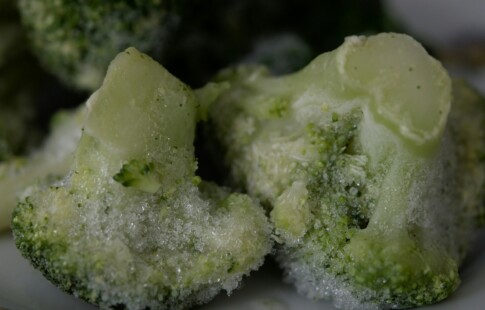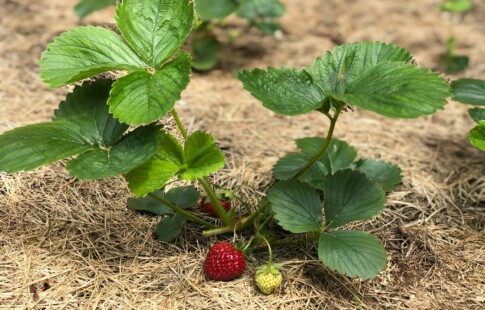
How to Make Seitan from Vital Wheat Gluten
We are reader-supported. When you buy through links on our site, we may earn affiliate commission.
It is a common misconception that meat-free diets have fewer and less dense protein options. Many default to beans, seeds, soy, and sometimes dairy, as their primary sources. However, there is one with such a high amount of protein, that it exceeds even chicken — seitan. And, you can make it at home with a few simple ingredients. If you want to learn how to make seitan from vital wheat gluten, it’s much easier than you might think.
What Is Seitan?
Seitan is a protein made from the gluten in wheat. It is the ingredient in bread responsible for its iconic texture. While many vegetarian and vegan protein options attempt to replace or imitate meat options, like the Impossible Burger, seitan is its own unique protein, not attempting to replicate or be an animal protein.
Seitan is known for its robustness, versatility, and protein density. People making seitan can make it as soft or tough as they want, but it will still maintain a slightly chewy texture. It can be flavored with all spices and sauces, making it perfect for throwing into a soup, stir fry, or Tex-Mex dish.
If someone is looking for a high-protein addition to their diet, look no further. Seitan’s nutrition details according to the USDA per 100 grams are:
- 370 kcal
- 75.2 grams of protein
- 1.85 grams of fat
- 13.8 grams of carbohydrates
- 0.6 grams of fiber
- Various micronutrients, including calcium, iron, magnesium, and potassium, among others, in varying amounts
This makes seitan one of the best bang for your buck if you’re trying to build or maintain muscle without consuming meat.
Unfortunately, buying from the store premade can be expensive because it is still a relatively niche product. If you are willing to put in a little extra time and learn how to make seitan from vital wheat gluten, you will save money and help your diet.
How to Make Seitan from Vital Wheat Gluten
You’ll be surprised how easy it is to learn how to make seitan. Almost anyone can do it, so here is a tried-and-true recipe.
1. Set Water to Boil
You’ll want to get a medium-sized pot and fill it with water. It must be over halfway but not too much to where it could easily boil over. It should also not run over after you put the seitan in it.
You can leave the water plain, and you’ll make a delicious seitan. If you want a more robust flavor, add something to your water to sneak more depth into it. A veggie stock is a common go-to, but you can add something like soy, tomato paste, or Worcestershire.
By the time you’re mixing your ingredients, hopefully, the water will be boiling.
2. Mix Dry Ingredients
Get a medium-sized bowl. Put these ingredients in one at a time:
- 1 cup of vital wheat gluten
- 1 tsp onion powder
- 1 tsp garlic powder
- 1 tsp paprika
- ⅓ cup of nutritional yeast
- ½-1 tsp of salt
- Pepper if desired
Grab a whisk and stir until everything is thoroughly integrated. Remove as many clumps as possible so the next steps are easier.
3. Mix Wet Ingredients
Grab a separate vessel, like a measuring cup, to mix your wet ingredients. Do not add these one at a time to the dry ingredients. Everything must be together before activating it with the dry.
- ¾ cup of vegetable broth or ¾ cup of water and a directed amount of veggie bouillon
- 2 tbsp of soy sauce or Worcestershire, depending on the flavor profile
- 1 tbsp tomato paste
Stir completely until no clumps of tomato paste or other ingredients float in the water.
4. Mix and Knead
Pour your wet ingredients into the dry. Stir gently until it starts to thicken and look like a dough. Mix it well enough to where there is know vital wheat gluten remaining in the mixture. Add more water if it is too dry to the point where it doesn’t seem to be going away, but only do so in small increments.
Then, knead the dough for elasticity. You won’t need to knead it too much, so use your best judgment. It should feel smooth and slightly springy to the touch. It might also be a touch wet, and this will be fine.
Put the dough on a sheet of aluminum foil or an undyed, unbleached piece of white fabric if you want something reusable. Shape it into a log or ball and wrap the seitan with the foil or fabric. Use cooking twine to hold the wrapping together.
5. Boil
By this point, your water should be boiling. All that’s left to do is carefully lower the covered seitan mixture into the water. Then, lower the burner’s temperature to simmer. Set a timer for 45-50 minutes, depending on how firm you want the results to be. Leave the seitan partially covered by a lid, and check periodically to ensure the covering stays together and the water has no chance of running over.
Preparing Your Seitan
After the time is up, you can safely remove it from the water, unwrap it, and let it dry. At this stage, you can eat it as is on a sandwich, in a salad, and in countless other ways. You can also take it further by marinading it or adding a glaze, just as you would chicken or pork.
If you’re feeling stuck on ways to use your seitan, think of how you prepared meat in the past. You can use all those techniques here to find your favorite ways to use seitan. This is a wonderful mentality to use to your advantage if trying lower-meat diet options.
The beauty of this recipe is it is extremely customizable. Add some herbs to the flour mixture if you want to make an Italian-inspired seitan. Add some cayenne or chili powder for the spicy enthusiasts to brighten it up. Or, you can make a practical foundation with minimal ingredients and transform it from there. Who knows — you might find your new favorite recipe with seitan!
How to Make Seitan in a Few Easy Steps
Seitan is an underappreciated protein with macros that will blow anyone’s mind. Thankfully, it is easy and cheap to make in your kitchen on any schedule. Follow these steps, and you’ll have diversely flavored wheat protein in no time.
Share on
Like what you read? Join other Environment.co readers!
Get the latest updates on our planet by subscribing to the Environment.co newsletter!
About the author
Maria Visser
Maria serves as the Assistant Editor of Environment.co. A true foodie and activist at heart, she loves covering topics ranging from veganism to off grid living.





